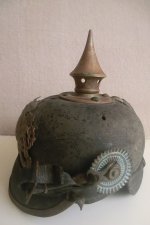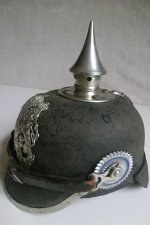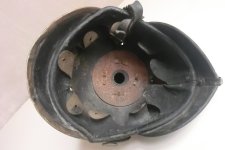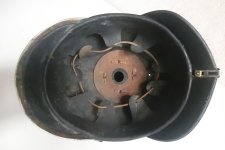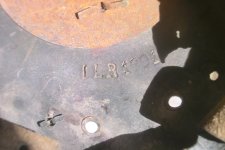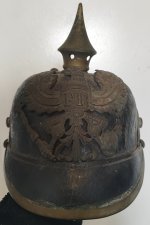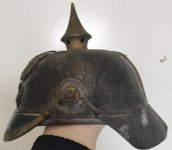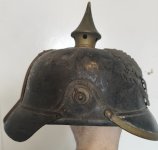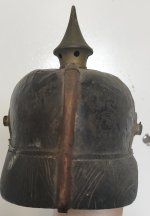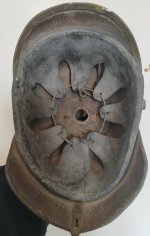As already said on other forums, two reasons for me, not to do that. Cloclo my friend, you´ll not be surprised by the following lines

Here my personal advocacy:
1) A patina of several decades lends a totally
unique charm to an object that has been totally untouched since it was last used during the period of interest to us. I would even go so far as to compare this charm to a
pedigree. It's an integral part of the object's history. Unfortunately, the term patina is often equated with grime by some collectors.
2) Patina is also a
guarantee of authenticity. It allows us to detect very easily and very quickly whether the object has been the prey of more or less skilful manipulations, restorations or changes in the past. To put it plainly: it immediately rules out the fact of a later assembly of parts not born together on a shell. Simply said: a parts helmet with the resulting loss of value on eventual resale on later date...
Furthermore, the claim that cleaned and polished metal regains its original patina after only a few weeks or months is erroneous. The metal surface will always have an "in-between" appearance, and will no longer perfectly match the condition of the leather surface, which can never be polished like the metal, unless it too is artificially rejuvenated by being completely re-rubbed...
It's simply a fact: in 99% of cases, it will always be totally impossible to restore our helmets to their former shiny glory.
Any attempt to do so will be quickly exposed as a modern intervention in the soul of an untouched object.
These are only my two cents....
Philippe
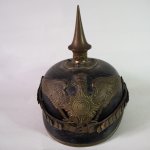
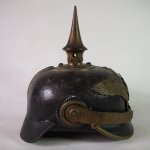
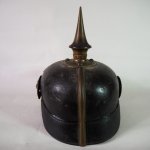
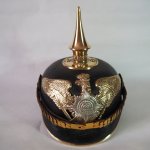
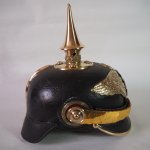
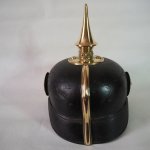 Extra-Helm Eigentum for officer cadets. Identical to that of a 0fficier. Perlring and 0fficier trimmings and cocades, but without the stars, and with a full-crown, screw-fastened M60 Adler-Guard and a Stern-Guard for enlisted.
Extra-Helm Eigentum for officer cadets. Identical to that of a 0fficier. Perlring and 0fficier trimmings and cocades, but without the stars, and with a full-crown, screw-fastened M60 Adler-Guard and a Stern-Guard for enlisted.




 Extra-Helm Eigentum for officer cadets. Identical to that of a 0fficier. Perlring and 0fficier trimmings and cocades, but without the stars, and with a full-crown, screw-fastened M60 Adler-Guard and a Stern-Guard for enlisted.
Extra-Helm Eigentum for officer cadets. Identical to that of a 0fficier. Perlring and 0fficier trimmings and cocades, but without the stars, and with a full-crown, screw-fastened M60 Adler-Guard and a Stern-Guard for enlisted.
